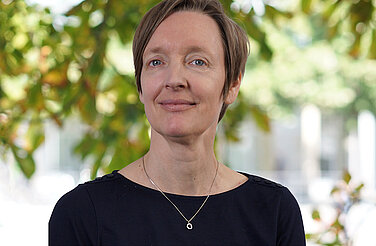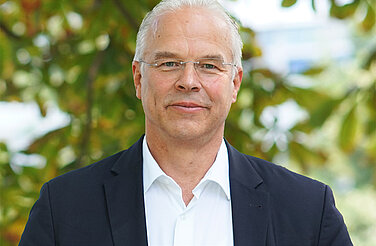This content is also available in: German
Agriculture is the missing link in the EU’s 2040 climate strategy
Agriculture has major potential to contribute to EU climate neutrality – both by reducing emissions and delivering carbon removals. To mobilise this potential, the sector must finally become an integral part of the EU’s climate agenda.
The Commission’s recent proposal for a binding 2040 climate target sends a strong signal of the EU’s continued ambition to tackle climate change. Achieving a 90 percent net reduction in greenhouse gas emissions by 2040, compared to 1990, demands significant contributions from all sectors of the economy. Despite largely stagnant agricultural emissions over the past 20 years, the sector has a major role to play in Europe’s climate efforts. However, the sector’s potential is not reflected in the Commission’s proposal.
Based on our analysis, we argue that agriculture holds substantial untapped potential to contribute to reaching the EU’s climate targets. Unlike many other sectors, greenhouse gas emissions from agriculture cannot be reduced to zero – as long as land is farmed and animals are raised for food, some emissions will persist.
As our study shows, however, with the right policy incentives, the sector could:
- Reduce greenhouse gas emissions from agriculture and agricultural peatlands by 60 percent by mid-century compared to 2020. The main levers include rewetting agricultural peatlands – which, though covering only 2 percent of agricultural land, account for over 20 percent of total agriculture-related emissions – and reducing methane emissions, primarily from cattle farming. Methane reductions can be achieved through mitigation technologies and practices and by lowering both the consumption and production of livestock products.
- Contribute to negative emissions by planting fast-growing trees for woody biomass production and hedges on agricultural land. Establishing such woody structures on eight percent of agricultural land would generate negative emissions of around 770 million tonnes of carbon dioxide (MtCO2) between now and mid-century. In addition, the resulting harvested biomass could reduce the EU’s greenhouse gas emissions by about 120 MtCO2 each year by substituting fossil feedstocks in the industrial and energy sectors.
In a nutshell, efficient land use and a more sustainable demand for food, feed and other biomass are key levers for combining these climate potentials with maintaining an adequate supply of food for healthy diets in the EU, while also contributing to global food security.
The EU should address four policy areas that are particularly important for mobilising this potential:
1. Defining an appropriate climate contribution for the agricultural sector for 2040 and 2050. The absence of a clearly defined contribution from agriculture within the EU’s climate targets creates uncertainty about the sector’s future development and hinders investment and innovation. Establishing long-term targets would provide planning security for the sector and guide policymakers towards designing effective incentive mechanisms. It would also create a predictable policy environment for investors and support early movers in the food industry that have made climate commitments covering their scope 3 emissions.
2. Establishing a climate policy for the agricultural sector. Based on these long-term climate targets, a policy for pricing the sector’s emissions and rewarding carbon storage on agricultural land would set the right incentives to steer entrepreneurial action toward climate change mitigation.
3. Creating fair food environments. Fair food environments support sustainable food consumption, including more plant-rich diets and less food waste. This is important for reducing food system emissions, creating scope for producing biomass for the bioeconomy and avoiding leakage risks through increased imports from third countries.
4. Paving the way for a sustainable bioeconomy. Sustainable production and consumption must extend not only to food, but also to the use of other biomass from forests and agriculture. Optimising biomass use for a sustainable bioeconomy requires prioritising material applications that favour long-lasting materials, while limiting energetic use to hard-to-electrify applications in the medium term.
By not explicitly mentioning agriculture, the Commission proposal misses the opportunity to highlight the sector’s potential contribution to climate neutrality. At the same time, the Commission foresees flexibility through international credits. The memorandum to the proposal states that international credits should not be used for compliance in the EU carbon market – this suggests they will be relevant particularly in the agriculture and the LULUCF sectors.
Compared to other sectors, agriculture has only just begun adopting greenhouse gas mitigation technologies and practices. International credits may shift the debate and further delay incentives for the sector to contribute to climate neutrality.
Furthermore, international credits may decrease incentives for EU agriculture and forestry to deliver negative emissions. Although there is substantial potential, it will only be realised if farmers believe in future carbon markets and see real economic opportunities in producing negative emissions. Low-cost international credits, possibly linked to social and environmental challenges in their countries of origin, could divert resources away from investing in carbon sequestration in EU agriculture and forestry.
There is no doubt: investment in land-based negative emissions in EU forests and agricultural landscapes is needed. The EU now needs to set clear incentives for such investments.
Finally, the Commission proposal states that permanent negative emissions can play a role in compensating hard-to-abate emissions. Many of these removals will likely be linked to carbon storage from biomass (Bio-CCS or BECCS). While it is important to invest in infrastructure for negative emissions, bio-CCS or BECCS should only be pursued where biomass is used efficiently, avoiding the creation of additional biomass demand solely for the purpose of negative emissions.
The 2040 target is a strong signal to enhance climate change mitigation efforts. It is now time for agriculture to become an integral part of the climate agenda, to realise its full potential for emission reductions and carbon removals.
This article was first published in a slightly modified form on Table.Media.




